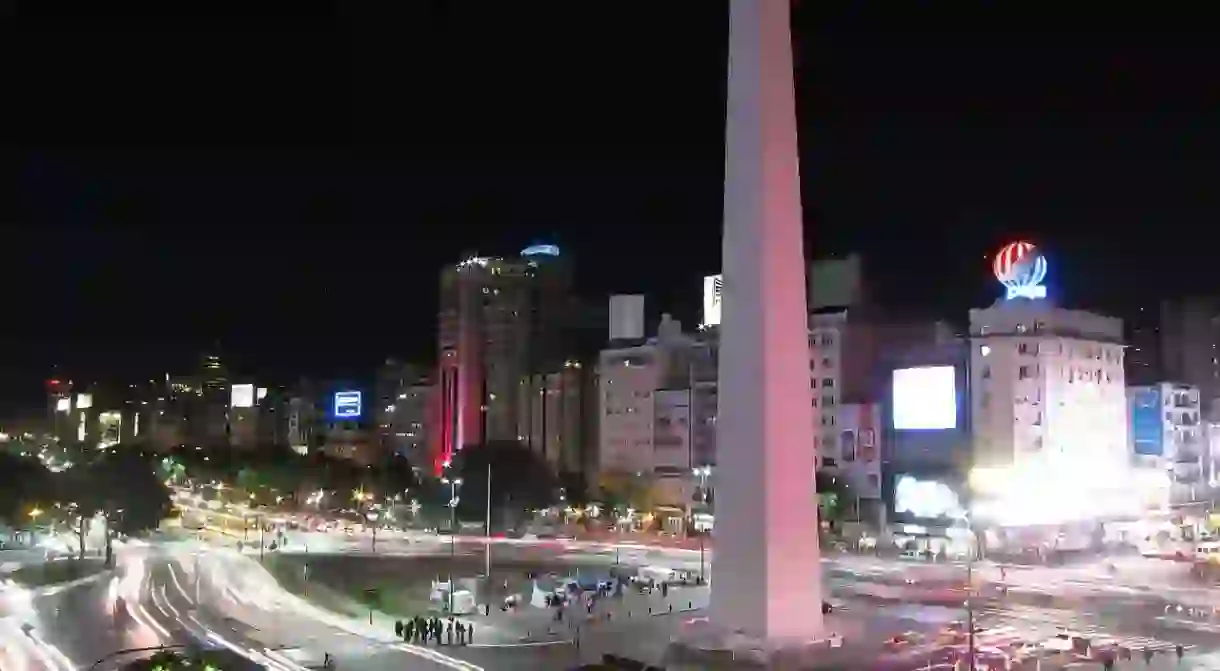A Walking Tour of Buenos Aires' Architectural Landmarks

Buenos Aires is spectacular, but it’s also on the gigantic side. With so much to see spread all around the cosmopolitan city, it might sound a little odd to go sightseeing on foot. But this is not your average stroll! In fact, this walk will take you through the architectural magnificence for which the city is famed.
Renowned for its storied mix of architectural styles, Argentina’s capital city has a structural landscape that speaks to its rich history of European immigration and nation-building at the turn of the last century.
Start off your walking tour at Congreso, which you can reach by the subway station of the same name. Here you’ll find a sprawling plaza offset by grandiose neoclassical architecture, including the towering Congressional building itself.

Stroll East down Avenida Plaza de Mayo, a boulevard lined with Art Nouveau and Neoclassical architecture, until you reach Palacio Barolo (Avenida Plaza de Mayo 1370), a national monument built in homage to Dante’s Divine Comedy — also one of the ten most impressive buildings in the city. This 19th century architectural masterpiece is the brainchild of Italian immigrant Mario Palanti. The ground floor represents Dante’s Inferno, floors 1-14 Purgatorio, and floors 15-22 Paradiso; which works out nicely as you can access the rooftop and find yourself a little closer to heaven. Panoramic city views, anyone? It is recommended that you register ahead of time for one of their guided tours, a must-see if you want to experience this building’s beauty in full.
Once you’ve visited Palacio Barolo, return to Avenida Plaza de Mayo and keep heading East. Tip your hat to the beautiful Teatro Avenida, and take a left on a street called Salta. Meander down Salta for five blocks (which will soon be changing its name to Libertad) until you hit the bustling theater-rich Boulevard Corrientes.

Once you cross Avenida 9 de Julio, ostensibly the widest avenue in the world, you’ll find yourself standing in front of Buenos Aires’ famous Obelisk. Built in 1936, this iconic monument pays tribute to the city’s roots and was designed by Argentine modernist architect, Alberto Prebisch.
The 230-foot Obelisk has four sides and is fashioned from stone that was quarried in the province of Córdoba. Each side represents a key moment in the nation’s history: the city’s founding in 1536, it’s more decisive founding in 1580, the unfurling of the Argentine flag in 1812, and the declaration of Buenos Aires as Argentina’s capital city in 1880.

Take a relaxing stroll North, up Avenida 9 de Julio, and in two blocks you’ll reach the city’s famous opera house called Teatro Colon. Guided tours are welcome, or you can check out the events program for a concert to attend during your stay.
If you’re in need of a breather by this point, head on over to the nearby Plaza Lavalle as you walk past Teatro Colon to a street called Talcahuano. Take a left and you’ll find yourself immersed in a lush square full of cafés and park benches which are encircled by ornate Art Nouveau architecture. All that’s left to do now is sit back, smile and take it all in. Congrats, you did it!













